About the Breed!
The German Shepherd is often seen as the best all-around working dog. They are large, strong, and quick, with a smart and noble personality. Loyal, brave, confident, and steady, German Shepherds are a favorite among dog lovers. They can grow up to 26 inches tall at the shoulder, and their body is shaped with smooth, graceful curves. While their normal walk is a relaxed trot, they can run very fast when needed. German Shepherds are known for their loyalty, courage, and ability to learn many commands. They will protect their family and loved ones with all their strength. Although they are friendly and great family pets, German Shepherds can be a bit distant around strangers and don’t usually make instant friends.
History:
The German Shepherd, also called Alsatian in Britain, is a medium to large dog breed from Germany. It was created by Max von Stephanitz in 1899 using different traditional German herding dogs.
Originally, German Shepherds were bred to help herd sheep. Over time, they’ve been used for many other tasks, like helping people with disabilities, search-and-rescue missions, police work, and even in wars. They are also popular as family pets, and in 2013, the Fédération Cynologique Internationale said they had the second-highest number of annual registrations.
In the 1890s, people began trying to standardize dog breeds. Shepherds would breed dogs to keep traits that helped them with herding sheep and protecting flocks from predators. In Germany, each local community selected and bred dogs with certain skills. However, these dogs could look and act very differently from one area to another.
To fix this, the Phylax Society was formed in 1891 with the goal of creating a plan to standardize dog breeds in Germany. Unfortunately, the group broke up after just three years because its members couldn’t agree on whether dogs should be bred for work or also for their looks. Still, their work inspired others to keep trying to standardize dog breeds.
As cities in Germany grew, there were fewer predators, and sheepdogs were no longer as needed. However, people started to realize that sheepdogs were smart, strong, and good at many jobs. Max von Stephanitz, a former cavalry officer, believed dogs should be bred for work, and he was looking for the perfect working dog. He liked the strength and intelligence of Germany’s native sheepdogs but hadn’t found the right one.
Finalizing the breed:
In 1899, at a dog show, von Stephanitz saw a dog named Hektor Linksrhein, who was exactly what he was looking for. Hektor had been bred to have the right qualities, like strength, intelligence, and loyalty. Von Stephanitz was so impressed that he bought the dog and renamed him Horand von Grafrath. He then started the Verein für Deutsche Schäferhunde (Society for German Shepherd Dogs), with Horand being the first dog to be officially registered.
The breed quickly became one of the most popular in the world, and by 1923, the society had 50,000 members in over 500 branches across Germany.
German Shepherd Breeds Types
East-European Shepherd
The East-European Shepherd is a type of German Shepherd that was bred in the former Soviet Union. It was specifically made to be larger and more resistant to cold weather. Unlike some other German Shepherds, this breed doesn’t have the physical issues found in show-line German Shepherds. It has become one of the most popular dog breeds in Russia.
King Shepherd
The King Shepherd is a variety of the German Shepherd that was developed in the United States. Breeders wanted to create a German Shepherd without the physical issues found in some traditional lines. This breed is known for being larger and more balanced than other German Shepherds.
Shiloh Shepherd
The Shiloh Shepherd was created in the U.S. in the 1970s and 1980s. The goal was to fix some of the behavior and physical issues found in modern German Shepherds. Shiloh Shepherds are known for their large size, long backs, calm temperament, and healthy hips. They were recognized as a breed by the American Rare Breed Association in 1990.
White German Shepherd
The White German Shepherd is a variation of the German Shepherd that has a white coat. While this color was once banned in Germany, it became popular in the U.S. and Canada. A breed club was formed for white German Shepherds, and the breed is now recognized by the United Kennel Club as the “White Shepherd.”
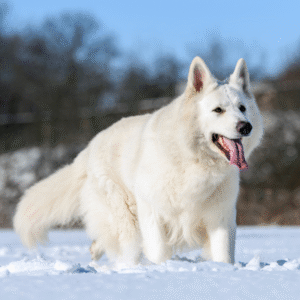
White Swiss Shepherd Dog
The White Swiss Shepherd Dog is a breed developed in Switzerland. It descends from the American White Shepherd. The first dog that started the breed was an American dog, imported to Switzerland in 1966. In 2003, the White Swiss Shepherd Dog was recognized as a separate breed by the Fédération Cynologique Internationale, and it is now recognized by several national kennel clubs.
Black German Shepherd
The Black German Shepherd is a rare version of the German Shepherd with a solid black coat. These dogs are known for being loyal and protective, just like other German Shepherds, and they have the same strong, muscular build.
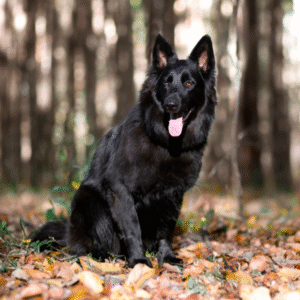
Coats:
Long Coat German Shepherd
Some German Shepherds have a long coat instead of the usual medium-length fur. The Long Coat German Shepherd has soft, flowing fur, giving them a beautiful and unique appearance. Despite the longer coat, they still share the same personality traits and abilities as other German Shepherds.
German Shepherd Double Coat
Most German Shepherds have a double coat, which means they have two layers of fur. The outer layer is thick and weather-resistant, while the undercoat is softer and keeps them warm. This double coat is perfect for protecting them in cold weather and helps them stay comfortable in many different conditions.
German Shepherd Triple Coat
A rare but fascinating variation of the German Shepherd is the Triple Coat. These dogs have three layers of fur, offering extra warmth and protection. This extra coat makes them especially suited to cold climates, though it also means they need more grooming to keep their fur in good condition.
German Shepherd Grooming & Care:
A German Shepherd’s undercoat is soft, yet the outer coat is tight, rough, and heavy. This is a dog breed that sheds a lot and needs lots of at-home grooming. The most common grooming tip which is very important to remember is prevention of tick & fleas, if you don’t bother and don’t control tick & fleas issue that will irritate your pet and result will be worse they got angry.
Skin Care
German Shepherds only need a bath a few times a year. During their high-shedding periods (in the spring and fall), baths with shampoo made for dogs can help decrease the hair around your home.
Excessive bathing should be avoided because it often strips the coat of its natural oils, which protect the skin and the undercoat.
Eye Care
Because German Shepherds can be predisposed to eye issues, it’s important to monitor your dog’s eyes for changes. This is especially important if you live at a high altitude or where there’s a very high UV ray index.
Ear Care
While it’s important to keep your dog’s ears clean, ear cleanings should only be done if there is an issue or visible debris in the ear. Adding excessive moisture to a dog’s ear by bathing frequently, swimming, or using ear cleansing liquid too often can lead to bacterial growth and an ear infection.
German Shepherd Healthcare:
Most German Shepherds are pretty healthy dogs. Good breeders make sure the parent dogs don’t have serious health problems like hip or elbow issues or a nerve disease called degenerative myelopathy. One thing to really watch out for is something called bloat—it makes their belly swell up fast and can be very dangerous. It’s important for owners to learn the signs of bloat and know what to do if it happens.
The national dog club recommends these health checks:
- Hip check
- Elbow check
- A test to see how the dog reacts in different situations (temperament test)
German Shepherd Nutrition Guide:
Puppies need three basic things to grow and stay healthy: good nutrition, warmth, and companionship. One of the most important parts of good nutrition for puppies is making sure they eat enough. From the time they are weaned until they’re about six months old, puppies should eat three or four times a day. After they reach six months, they can eat twice a day until they are fully grown, and once a day after that. Many owners, especially of larger breeds, prefer to feed their dog twice a day throughout their life. This feeding method helps maintain a balanced diet without overfeeding.
Puppies need twice the amount of nutrients and energy that adult dogs require, especially when they’re growing. Their weight should increase steadily, but it’s important not to let them become overweight. Too much weight can cause problems like joint issues, especially for growing puppies. At the same time, feeding them too little can cause stunted growth and low energy.
As puppies grow into adult dogs, their calorie needs will decrease. Adult dogs generally eat less than puppies or young dogs that are still very active. Working dogs, like sled dogs, need more calories and special nutrition since they burn a lot more energy. These dogs need pet food that’s higher in fat and protein to keep up with their needs.
Types of Dog Food:
Canned dog food is soft and easy to digest but may not provide the same level of dental care as dry food.
Dry food is often the best option for maintaining dental health and is easy to store. at Petpawtner, we have different brands dry dog food for your feline friends.
Wet food is often more flavorful and provides extra moisture, which can help dogs that don’t drink enough water.
At Petpawtner.com, we offer a wide range of premium pet food to keep your furry friend energized and well-fed throughout all stages of life. Shop now and give your dogs and other pets the best care possible, delivered right to your doorstep across Pakistan!
Other Important Factors for Puppies and Dogs:
Sleep is just as important as nutrition for puppies. They need a warm, quiet place to rest so they can grow properly.
Exercise is key for both puppies and adult dogs. Without enough activity, dogs can become bored and develop bad behaviors, like chewing or excessive barking.
Companionship is vital. Dogs are happier and healthier when they are part of the family and included in daily activities.
Training:
Puppies learn by watching others, but their instincts also play a big role in how fast they pick up certain behaviors. For example, a dog that was bred to guard a home will be less likely to chase after a scent than a dog that was bred to hunt. Guard dogs need help figuring out who’s okay to be around and who isn’t, while hunting dogs are usually friendly with everyone. Understanding what a dog was bred to do is really helpful when training them to be a good pet.
When it comes to training a dog, there are many ideas about what works best, but some rules apply to all training methods. First, the dog needs to know what is expected of them. They should be praised when they do well, and any punishment for bad behavior should happen right away and match the action. The dog must understand why they are being punished. It’s important to be consistent and kind in training. Most dogs will follow the rules easily, but some, especially male dogs, may try to challenge their owner’s authority. This behavior is dangerous and should be corrected as soon as possible. Effective training should make sense, and commands need to be clear and enforceable.
Key Points:
- Dogs learn by watching, but instincts also affect how they learn.
- Guard dogs may not chase scents, while hunting dogs usually will.
- Knowing what a dog was bred to do helps with training them.
- The dog must understand what’s expected and be praised when they do well.
- Punishments should be immediate and match the behavior.
- Consistency and kindness are key in training.
- Some dogs may challenge authority, especially males, and this should be stopped early.
- Commands should be clear and sensible for successful training.
FAQ’s:
1) What are 5 facts about German Shepherds?
- German Shepherds are known for their Intelligence.
- German Shepherds gained fame during World War I.
- German Shepherds are not dangerous dogs.
- The German Shepherds are best companion dogs.
- German Shepherds are a worldwide famous dog breed.
2) What is the weakness of a German Shepherd?
German Shepherds, like all dog breeds, can be prone to specific health issues. They are more likely to develop conditions such as degenerative myelopathy, hip dysplasia, and dilated cardiomyopathy compared to other breeds.
3) What does a German Shepherd eat?
German Shepherds mainly eat high-quality commercial dog food that focuses on protein-rich ingredients such as chicken, beef, turkey, and lamb. It’s also beneficial to include fruits, vegetables, and grains like rice or oats in their meals for added nutrition. You can find more options on Petpawtner store, like hi-Energy Dog Food which is best food for the energetic and sporty dogs like German Shepherd and Rottweiler.
Here’s a closer look at their diet:
Protein:
German Shepherds need plenty of protein, especially when they’re puppies, to support their growth and active lifestyle.
Meat:
They should have a variety of meats like chicken, beef, turkey, lamb, salmon, and rabbit for a balanced diet.
Grains:
Adding grains like rice and oats provides them with the energy they need.
Vegetables:
Vegetables such as carrots, sweet potatoes, and pumpkin can be included for extra fiber and vitamins.
Supplements:
In some cases, supplements like salmon oil may be added to help provide essential fatty acids for a shiny, healthy coat.
Raw Food Diet:
Some pet owners opt for a raw food diet, which includes meats, bones, and organ meat, along with a small amount of plant-based foods.
4) Is the German Shepherd a good family dog?
Yes, German Shepherds can be gentle and protective companions when they receive the right training and socialization. This breed is perfect for active families. Their intelligence and protective nature make them a great choice for households with children, as long as the dog is well-trained.
5) Why German Shepherd is so famous?
German Shepherds are known for being confident and brave. They do really well with training and can follow commands like pros. Because of this, they’re often used as working dogs in the military and police. They help with things like patrolling, sniffing out bombs, and searching for missing people.
6) What is the danger of German Shepherd?
A German Shepherd’s attack can cause serious physical and emotional damage that lasts for a long time. In fact, the German Shepherd is ranked third on the CDC’s list of dogs most likely to cause a fatal injury to a human because of their bite.
7) What is a German Shepherd afraid of?
Noise Sensitivity: A lot of German Shepherds are sensitive to loud sounds like thunderstorms, fireworks, or construction noise. This can make them feel scared or anxious, causing them to pant, pace, or hide.
German Shepherds should be fed two times a day: once in the morning and once in the evening. You should divide their daily food amount between these two meals. It’s also a good idea to exercise your dog before mealtime to help with potty training.
8) Can a German Shepherd drink milk?
Dogs can drink milk safely if they don’t have a dairy allergy, and if it’s given in small amounts. However, to be on the safe side, it’s a good idea to check with your vet before adding new foods to your dog’s diet.
9) How to make a German Shepherd happy?
German Shepherds excel when they are involved in activities that offer purpose, interaction, and excitement. Incorporating exercises for German Shepherds into their daily routine ensures they stay mentally stimulated, physically fit, and emotionally satisfied.
At PetPawtner, we’re passionate about providing your furry friends with the best products to keep them happy, healthy, and full of energy. We hope you found this blog helpful, and we’re here to help with all your pet needs!
If you’re ready to spoil your pet with high-quality products, visit our online store now! Don’t forget to check out our latest collection of toys, accessories, and treats designed for pets of all shapes and sizes.
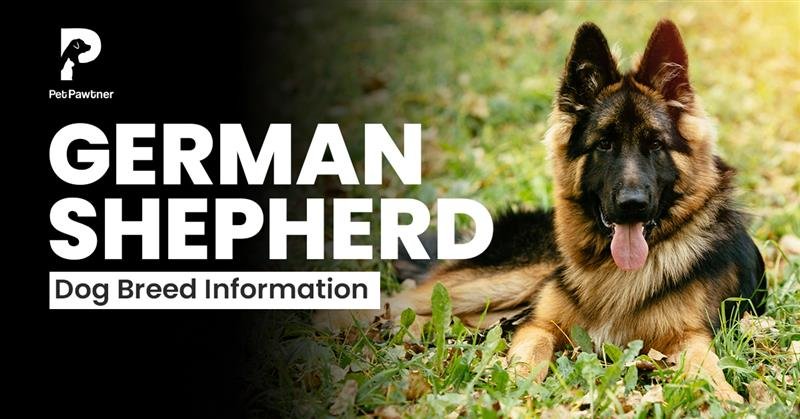

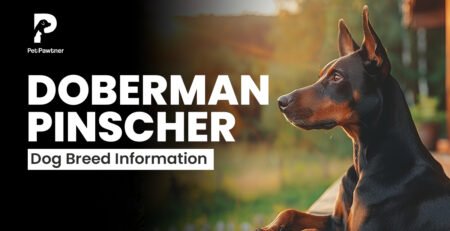


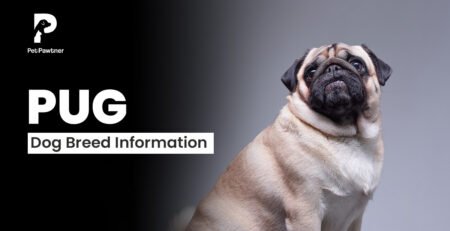
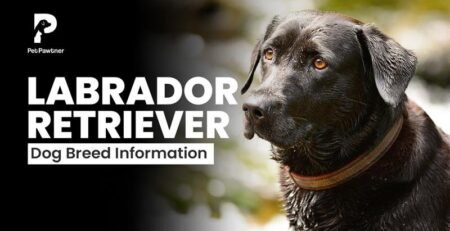
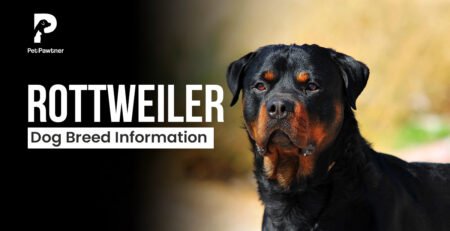
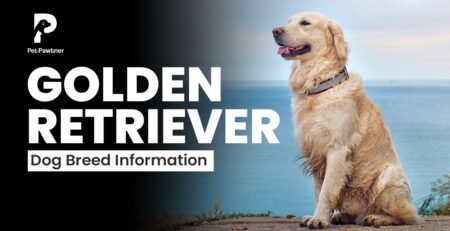
Comment (1)
[…] Here you can read complete guide about German Shepherd breed […]